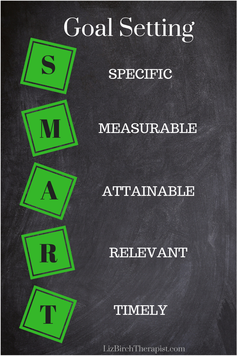 Anxiety is the number one reason people come into therapy. Are you trying to manage life with anxiety? Imagine what your life would be like if you were able to minimize your anxious thoughts? Imagine what your days will be like with more calmness. You may have thought about working with a therapist but just haven’t taken that step. When we are faced with the unknown we tend to avoid. I thought it might help if I shared with you what may happen in a therapy session with me as we work together on reducing that anxiety you’ve been living with. Follow along as if you are in session with me. Think about the questions. How would you answer them? Take notes. Go ahead and perform the coping exercise I describe. Now imagine you just walked into my calming office. Take a seat, anywhere you’d like. Let’s begin . . . I’d like to get to know a bit more about your goals and history of anxiety. What would you like to gain out of therapy and particularly this session? Anxiety feels different for everyone so therapy with me is very personalized for your specific issues. It’s also important to realize that therapy is a partnership between you and me – the therapist. I will be here to guide you, gently push you and help you realize that with your participation you can minimize your anxious thoughts. Have you ever been diagnosed with an anxiety disorder such as Social Anxiety, Obsessive-Compulsive Disorder, Panic Disorder, Post Traumatic Stress Disorder, or any specific phobia? Let’s get more specific about your goals. If you don’t have a goal in mind you won’t know when you’ve gotten there. What three goals are you looking to gain? They may be something like, decreasing your number of panic attacks, reduce your anxiety around specific relationship issues, decreasing performance anxiety at work. Share what your three goals are - the more specific, the better. Write them down. For each goal I’d like to know how your life would be different when you reach each goal. For example, “I’ll be able to perform better at work”, “It’ll be easier to socialize with others”, “I will have more days of the week with no panic attacks”. Write down how you imagine your life will be different with minimal or no anxiety. In order to continue to measure your improvement I will most likely have you complete a GAD-7 quick assessment often. It’s an easy 7 question rating scale. I’d like you to complete it at least once or twice a week. Completing this easy rating scale will help you track your improvement. I will provide you access to this assessment. Let’s put some focus on your symptoms and how they manifest for you. This is very important. Here are a few more questions. How long have you been trying to manage your anxiety? When does your anxiety affect you the most – at home, when you first wake up, at work, socially? When did your anxiety begin affecting you? What treatments have you had in the past? What treatments helped and which ones didn’t? It’s important to discuss triggers. What are your triggers that cause anxiety? For example, chronic stress, health issues, domestic violence, military duties, financial concerns, not feeling safe, etc. Write down all of your triggers. How have you been coping with your anxiety, if you have at all? For example, do you have specific ways of distracting yourself from the anxious thoughts? Behavioral coping skills might be walking away, exercising, taking a nap, focusing on slow breathing, etc. Some cognitive coping skills could be thinking positive thoughts, saying positive affirmations, brainstorming about solutions, thinking through and making a to-do list. Write down some ways you’ve been coping with your anxiety. You need actionable strategies and skills to overcome your anxiety. Having a physical awareness is important. What are your physical / emotional reactions to anxiety? Headaches, butterflies in your stomach, hands are shaking, feeling nauseous, your heart feels heavy today or an overwhelming feeling of just not feeling right. Focusing on your physical symptoms are very important. Your physical feelings work hand in hand with your thoughts. That’s the body and mind connection. We need to regulate our body first to regulate our mind. Lets focus on your body first so that you can regulate your mind. We can’t focus on one and ignore the other. I’d like you to work through this exercise so you can enhance your body and mind connection. You’ll be scanning your body with purpose so that you can regulate your body naturally. This is called a Somatic experience which focuses on the body. You can help your body calm down naturally. And remember you can’t relax your mind if you’re physically having issues such as trembling hands, headaches, pounding heartbeats. Dr. Peter Levine is the founder of Somatic Experiencing and introduced it in 1997. He introduced the exercise I’m going to describe below which will work through your physical symptoms. This exercise gently invites awareness back into the body and can create experiences of safety and calm. Go ahead and follow along below. Somatic Exercise: Get comfortable, sitting or laying down, at first you'll need to read through the instructions but eventually it's beneficial if you close your eyes. Put one hand on your forehead and one hand on your heart. Think about a mildly anxious moment and notice how you are physically feeling. How is your body responding? Just let yourself feel it. Pay attention to your hand on your forehead. Just be there and focus on your hand on your forehead. Don’t rush it. Notice any response. Now focus on your hand on your heart. Don’t do anything, just observe. Focus on any physical feelings. No need to address anything, just notice any feeling you have. Now go inside your body by focusing on any area between your hands, notice any sensations on your forehead, face, neck, shoulders, chest. Notice any physical feelings. How do those body parts feel? Do they feel tense, soft, fidgety, or comfort. Just notice it, be curious. Be with those sensations and wait for the shift. Notice how you are breathing, stay there, notice it. Now take your hand from your forehead and place it on your belly. Now focus on the sensations in your belly. Is it relaxed, tense, warm, cold, heavy, and/or tingling? No need to do anything, just notice the physical feelings and wait for the shift or change in your body. Now bring your attention to what’s going on. Notice any sensations that are going on in your entire body - your chest, back, neck, arms, fingers. Wait to notice any shift or change. Now take both hands and place them on your thighs. What sensations are you feeling? Gently press. Be observant, no need to do anything. Let your body just happen. Notice how it feels. Your body will regulate itself inside and outside. Notice how you are breathing. Count to three and slowly open your eyes and take a deep breath and bring your attention back to the room. Notice any shifts you may be feeling now. What specific parts were regulated? Give yourself 5 minutes to focus on your body. What body parts were stable and relaxed? Notice the relaxation in your body now? If there is some tension, what got in the way? Were you able to get out of your mind and focus on your body? Do you feel safe in your body and your environment now? The two key concepts in this exercise are feeling a sense of safety and a sense of present moment in your body. This beautiful mindfulness exercise only takes 5-10 minutes. It becomes easier and you will be better able to focus the more often you do it. This will create a better relationship within yourself and enable a sense of compassion and curiosity. I encourage you to practice this self-holding exercise at least two times a day in a neutral setting and neutral mood. Then describe how your mood is each time you complete this. Utilize a 10-point scale with 0 being neutral and 10 being very anxious. It’s important to check in with yourself. Practice this coping skill daily. If anxiety is something you’d like to reduce and you’re ready to begin healing, feel free to reach out to me. Schedule a free 15-minute consultation with me or go ahead and call to set up an appointment. At the moment I’m scheduling appointments about a month out, unless I get a cancellation. So don’t put this off. At the onset of this article I asked that you “Imagine what your life would be like if you were able to minimize your anxious thoughts? Imagine what your days will be like with more calmness.” I don’t want you to have to only imagine that any longer. I want you to begin living it. I’m looking forward to hearing your story. I am a licensed Marriage & Family Therapist who can provide services with anyone who resides in the State of California. I have also been trained in Clinical Hypnotherapy which is beneficial for more specific goals. Liz Birch, LMFT, CHt ~ 714-584-6047 ~ [email protected] The information provided through this website is for informational purposes only.
This information is not intended to and does not create a therapist-client relationship.
2 Comments
 Self-esteem is a wonderful but delicate thing. When our self-esteem is high, we feel more resilient, we're less vulnerable to anxiety and rejection, and less cortisol — the stress hormone — is released into our bloodstream. But improving self-esteem can be challenging, especially if we've experienced setbacks in the past. There are different types of self-esteem. Scientists agree that our feelings of self-worth are global (how you feel about yourself) and specific (how you feel about yourself in specific roles, such as a parent or a cook). Our self-esteem is ever changing. It fluctuates day to day and hour to hour. We might wake up feeling great about ourselves one day and insecure the next. We think of our self-esteem as being either generally good or bad but it’s much more fluid, shifting up and down based on internal feedback we give ourselves and external feedback from others. So my goal is to work really hard for super high self-esteem… right? Well, higher self-esteem is not necessarily better. Your self-esteem should be high but not too high. Narcissists have high feelings of self-worth but their self-esteem is unstable. Small “insults” can make a narcissist feel terribly “wounded”. That is why people with stable self-esteem tend to be healthier psychologically. Higher is not necessarily better. People with low self-esteem are resistant to positive feedback. Having low self-esteem makes us resistant to positive feedback that could improve our feelings of self-worth. When our self-esteem is low we feel unworthy of praise and get stressed by the hightened expectations. Positive affirmations make people with low self-esteem feel worse. The very people with low self-esteem, who need positive affirmations most, tend to feel worse about themselves when they read them. When a statement falls too far outside our belief system we tend to reject it. Don’t critisize yourself. We are generally harder on ourselves when we shouldn’t be. When our self-esteem is low self-criticism can really make it worse. Treat yourself some compassion just like you would a friend. To improve your self-esteem find your competencies and develop them. Self-esteem is built by demonstrating real ability and achievement in areas of our lives that matter. If you pride yourself on being a good cook, throw some dinner parties. If you’re a good runner, run some races. Figure out your core competencies and find opportunities that accentuate them. Affirm your real wealth. This exercise helps revive your self-esteem after a blow: Make a list of meaningful qualities. Example, if rejected by a date, list qualities that make you a good prospect (being loyal): failed to get a promotion, list the qualities of a valuable employee (strong work ethic). Choose items on your list and write about why the quality is likely to be appreciated by others. Building up your self esteem can take some real work but if you stick with it, and do it correctly, the results can be amazing. Business Insider 2017 I am a licensed Marriage & Family Therapist who can provide services with anyone who resides in the State of California. I have also been trained in Clinical Hypnotherapy which is beneficial for more specific goals.
Liz Birch, LMFT, CHt ~ 714-584-6047 ~ [email protected]  Let me begin by saying Hypnotherapy is not a type of therapy in itself. However, it is a great aid to Cognitive Behavioral Therapy. Cognitive Behavioral Hypnotherapy, which combines hypnosis with cognitive-behavioral therapy, helps change unwanted patterns and behaviors by connecting with the subconscious mind. It helps with psychotherapy because the hypnotic state allows a person to explore more painful thoughts and feelings that may be hidden from the conscious mind. The positive suggestions that people are given while hypnotized are referred to as “post hypnotic suggestions” because they are intended to take effect after the person emerges from the deep relaxation or trance and is no longer under hypnosis. Experts say that hypnotherapy can help the "stuck" thought patterns that go along with depression, anxiety, OCD, and other mood disorders. The fact is, however, that hypnosis is a genuine psychological phenomenon that has valid uses in clinical practice. Simply put, hypnosis is a state of highly focused attention or concentration, often associated with relaxation, and heightened suggestibility. While under hypnosis, it seems many people are much more open to helpful suggestions than they usually are. "Hypnosis works and the empirical support is unequivocal in that regard. It really does help people," says Michael Yapko, PhD, a psychologist and fellow of the American Society of Clinical Hypnosis. Hypnosis has been used for centuries for pain control, including during the Civil War when Army surgeons hypnotized injured soldiers before amputations. Recent studies have confirmed its effectiveness as a tool to reduce pain. Among the leading researchers in the field is Guy H. Montgomery, PhD, a psychologist who has conducted extensive research on hypnosis and pain management at Mount Sinai School of Medicine, where he is director of the Integrative Behavioral Medicine Program. In a 2009 article in Health Psychology (Vol. 28, No. 3), Montgomery and colleagues reported on a study, which found that a combination of hypnosis and cognitive-behavioral therapy could reduce fatigue for breast cancer patients undergoing radiation therapy. Hypnotherapy is a safe procedure when done by a trained therapist. Hypnotherapy is not mind control or brainwashing. Hypnotherapy is specifically designed to fit your needs. This means that each hypnotherapy session is designed for just you and allows for a very individualized approach. The reason that hypnotherapy can be so effective is because it is so person centered. If you have tried other treatments and not seen results, you should give hypnotherapy a try due to the fact that it is so person centered. Check with your insurance company to see if they specifically cover hypnotherapy.
 Many of us have great intentions of reaching our goals. We may tell ourselves; "I'm going to work out more, I'm going to increase my sales this month, I'm going to work on home improvements this week, or I'm going to begin drinking less alcohol". All of those are great goals, however, it's too easy to not reach any of those goals if we phrase them as I wrote them. In order to be more successful in your goals you must get much more specific than the examples I listed above. A great system to use is the SMART goal setting system. SMART goal setting brings structure and traceability into your goals and objectives. SMART goals create clear milestones and an estimation of the goal's attainability. What does S.M.A.R.T. goal setting stand for? S = Specific
Being a therapist, I use this SMART system with many of my clients. I help them get very specific on what they want to accomplish in therapy. This may take a few sessions to figure out but it's important to clarify the goal. To have someone say, "I want to feel better about myself" is good, but it will be too difficult to know when my client will be there. So I dig a little deeper and ask my client, "What does that look like to you?" After some exploring my client may say, "Instead of crying 4 days a week, I want to work on only crying 2 days a week". That's very specific and attainable. We work on that goal and after a month or so we revisit the goal. Is the client crying less? How many days a week are they crying now?" Once they've reached crying only 2 days a week we set our next goal. How about crying only 2 times a month? Again a specific goal. This system works well when working on communication issues in relationships. A couple may argue every single day. So our measurable goal may be that they argue only 4 days a week. Of course, we don't want arguing at all, but is that realistic? Attainable? We set goals that we can be successful with. Once that goal is reached of only arguing 4 days a week we set a new goal of only arguing two days a week, and so forth. During the sessions, while working on goals, the therapist is exploring with the client what got them in their predicament. What changes need to be made and how can some of their problems be resolved. It's all a work in progress all striving for those specific, measurable, attainable, relevant, and timely goals. Why don't you think about a goal or two you'd like to reach? Then apply the SMART goal setting approach and see if that makes reaching your goals a bit more successful. I bet you'll be pleased with your results. If you are in my area and need help reaching your goals, please feel free to reach out to me and together we can work this system. It may take just a few sessions to get you set up and going. You can then check back a month or so later and we can explore how you are doing. My hope is for everyone to be successful in their goals, no matter how small or large. I am a licensed Marriage & Family Therapist who can provide services with anyone who resides in the State of California. I have also been trained in Clinical Hypnotherapy which is beneficial for more specific goals. Liz Birch, LMFT, CHt ~ 714-584-6047 ~ [email protected] https://en.wikipedia.org/wiki/SMART_criteria
 I’ve always recognized that I tend to run on the perfectionistic side. I’ve always liked things neat and orderly. When I have a project to do I strive to get it done as soon as possible because I don’t like projects hanging around. Also, when working on anything, I want to do it right the first time because I don’t want to waste time having to do it again. On the one hand, I appreciate my intention to do my best at whatever I do, but on the other hand, I see how this mentality can paralyze my efforts and prevent me from taking risks and reaching my goals. I have since come to learn, in the past decade, that I will get more out of life, and strive farther if I am more relaxed and flexible regarding some of my actions. My perfectionistic attitude hasn’t completely left me but there is a part of me where I’m learning to expand my perspective, be okay with some failure, and on occasion work on tasks allowing more room for error. We all have the choice to change. We can choose to shift our perspective and tell a new story. I’ve written, in the past, about how we all can change our stories. We don’t have to continue living with the struggles we place on ourselves. We all can write our new life story that includes imperfections and it’s benefits. All of this reminds me of a woman I once worked with. Forty-five year old Jane* is a CEO of a large company with many employees who report to her. In addition to her typical CEO responsibilities she also is part of the training program and does monthly workshops teaching those in middle management how to be successful in their jobs, which ultimately benefits the company. On one hand Jane appreciates the opportunity to share her sharp business sense and to improve the job skills of those in middle management, but on the other hand she lives with hidden intense anxiety that is destroying her daily living. At the end of the day she’s exhausted and by the time she gets home she takes out her anxiety and stress on those closest to her. When I first met Jane I could see an unhappy woman, who enjoyed little, but she had an amazing job making great money. I asked her to tell me details of why she came to therapy. Then, we had the following exchange. Me: Think for a minute, Jane. You're home alone on Sunday with anxiety gnawing at you. What goes through your mind the second before you begin to feel that way? Jane: Tomorrow is work and a training day. Me: Okay, but what do you tell yourself that is so horrible about that? Jane: I might make a mistake. What if I tell middle management something wrong? I’ll embarrass myself. Me: Ah! So what if you did? Why would that be so horrible? Jane: I don't want to make a mistake. Me: I know and that's good. Wanting to do well keeps you motivated. But, what I'm hearing you say is that, not only do you not want to make a mistake, but that you must never make even one mistake. Jane: I’m a CEO. I’m supposed to know everything about my business. They expect that of me. I can't afford a mistake. Me: But, Jane, how in the world can you pull that off? How can you go through your professional life, much less even a single day, and never make a mistake? Sounds impossible to me. Even CEO’s are imperfect, fallible people. Aren't they? Jane: Of course, but I got where I am today because I was taught to do everything right. My father started the company, worked hard, grew it to where it is now and had high expectations of me. I have to be sure I put out quality work, to not accept anything but the best. God forbid I make a mistake! He’s gone now but I still can’t fail. Me: Well, that's a shame, because that sets up the anxiety you suffer. Think about it. You've taken an admirable desire to do the very best you can with each of your managers. And then you've convinced yourself that you absolutely must, or need to be, God's gift to perfection. With that “must be perfect” expectation banging around in your head, you bring on this misery every time you’re in front of people. Do you see that? Jane: Yes, I guess, I see it. Me: What does this demand for perfection get you? Jane: I suppose my anxiety. Me: Yes, and little, if any, happiness and pleasure in your work. Jane: Sad, but true. My synopsis: Jane had a strong desire to do well, which was appropriate, and it motivated her to give each manager her very best. But, she went beyond this desire to believing that she must—absolutely must—perform perfectly, never overlooking one piece of data or making even the slightest mistake. To her, it would be horrible to make an error and she feared being humiliated in front of her managers so much that her anxiety began to take over her life. Even past her father’s death she fears letting him down. She hated Sundays because that meant the following day was the pressure of being perfect at work. Me: I’ll bet you hold these perfectionistic expectations in other areas of your life as well, not just at work. Right? Jane: I’m sure I do. Me: Well, like where? Jane: I get nervous at family functions. Me: What's your attitude about that? Jane: What if I do something stupid? My extended family knows I’m a CEO of a company my father started and they have expectations that I carry myself a certain way. I don’t feel like I can “let down” and relax. I’m always on edge. Me: In other words, Jane, you must do well at all times and look good, or else. Jane: Yes, that’s right. Once we got to the core of Jane’s anxiety we began to focus our therapy goals on her perfectionism. As Jane learned to relax and let go some of her perfectionism she began to realize that her managers were seeing her in a more real and authentic way. She did make a mistake in one of her presentations and she learned the world didn’t collapse. She saw that when her managers saw her mistake, it took the pressure off of them to be perfect and their own anxiety reduced. Jane’s happiness began to increase and her Sunday’s were much more enjoyable. Her family also saw her more authentic, relaxed and fun to be with. Here are four benefits to being imperfect: 1. Less Stress - Ditching the “shoulds” and all-or-nothing thinking will allow you to find more peace and enjoy your daily accomplishments and successes while you learn from your mistakes and less than perfect outcomes. 2. Improved Relationships – When you can accept your limitations and imperfections, you give others the permission to be imperfect, as well. As your expectations and impossible standards for yourself lessen, so do those you held for the people in your life. Our outer world is a reflection of our inner world, so when we begin to value ourselves regardless of what we do or achieve in any area, we then begin to value others for who they are and not what they do. 3. Increased Energy – When all of your energy is no longer concentrated on worrying about what you SHOULD be doing and how you SHOULD be doing it, you free yourself up to focus on what really matters. 4. Healthier Self-Image – Accepting and appreciating our imperfections creates room for self-nurturing, compassion, and love. You can begin to appreciate the qualities, characteristics, and experiences that are unique to you without the need to be perfect. Bottom line, if you are struggling with perfectionism accept that you are a fallible human being, one who, by your nature, cannot ever lead an absolute perfect existence. Strive to do well and work at creating positive experiences throughout your life. But what is most important is to be authentic and realistic. Make the effort to let go of your perfectionism and you will see the positive results. * While the main parts of this client exchange are true, main facts have been changed to protect the client's anonymity. I am a licensed Marriage & Family Therapist who can provide services with anyone who resides in the State of California. I have also been trained in Clinical Hypnotherapy which is beneficial for more specific goals. Liz Birch, LMFT, CHt ~ 714-584-6047 ~ [email protected]  One of the most common struggles that people come in to see me for is learning the art of letting go of the past. Many are stuck thinking about the wrongs that have been done to them and they are angry, frustrated, hurt, and sad. The unfortunate part about hanging on to those feelings is they continue to hurt and harm those that we love. That could mean hurting others that weren’t involved in the past misfortunes. So let’s take a look at those past feelings. Those feelings aren’t really the past, they are the present. You are presently feeling angry, frustrated, hurt and/or sad. And it’s those feelings that are keeping the past alive. What I first like to do with clients is to fester out all that the person is feeling, such as, anger, frustration, hurt, sadness – or any other feelings that they are experiencing. Example – Client: “I am angry that my parents worked all day and I was left alone to fend for myself”. Therapist: “You are angry that you were left alone?” Client: “Yes!” Therapist: “Tell me more about that anger.” Client: “They should have been there for me!” Therapist: “Tell me what it was like to be alone.” Client: “I had no one to talk to, I was bored, at times I got scared.” Therapist: “So you were scared to?” Client: “Of course I was scared, I was just a kid!” Therapist: “Let’s talk about you feeling scared.” Client: “I was scared because what if someone tried to come into my home when I was alone?” What if I got injured and no one was there?” “Why didn’t they care enough about me to be home with me?” Therapist: “What I heard you say in the beginning was you were angry because you were left alone but I’m also hearing you were frightened and you felt your parents didn’t care about you.” Client: “Yes, I guess, I feel they must have not cared about me so they left me alone at home.” So we move from just being angry to actually carrying around a feeling that the client’s parents’ “didn’t care”. The above is just a short snippet of working through feelings and there’s more involved. It’s a process of several sessions to fester everything out. It’s like peeling an onion and working through all the layers by identifying all the feelings that were experiences. As we identify all that had happened, it’s validated. I hope this gives you an idea of how to pull out all the feelings. I don’t want anything ignored or left out. I want to hear about the experiences that are causing so much pain. But what do we do about them now? Experiences of the past need to be validated and never brushed off. Events happened and the feelings of the past are real. I spend time with clients letting them “feel” all that they have identified. That could mean they sit in sadness, anger or grief – but just for a limited time. We then move on. Now we get to the part where we let it all go! Memories are just thoughts and thoughts have no power – unless the person chooses to give it power. Some thoughts stick with us, we react to them, and we keep thinking about them. Ugh! To keep thinking about them serves no purpose. Some things you shouldn’t do: • Make yourself forget about the past (you can not forget it) • Stuff or ignore your feelings • Wait for an apology or acknowledgment (if you never get an apology you will always sit in pain) • Wait for time to heal all wounds • Change the past (you can’t change what happened but you absolutely can change your reaction to what happened) As a Cognitive Behavior Therapist I talk to my clients about how our feelings control our behavior. If you stay with anger, hurt and sadness, then they will become your reality. As an alternative, be open to moving forward. Prepare yourself to feel differently. Contemplate not defining yourself by thoughts about the past. Keep in mind, what you focus on, will become your present. Many have been telling themselves their unfortunate life circumstances so many times that they aren’t allowing positive thoughts to come in. These negative thoughts keep you distracted from moving forward. Some stuck thoughts that people hold on to: • “I want to stay stuck because I was wronged.” • “It is someone else’s responsibility to make this better for me.” • “If I let go, I’m somehow approving another person’s bad behavior.” • “I need an apology.” • “Life is unfair.” Holding on to those thoughts, the constant reminder, will only keep your unfortunate experiences in the present. How you feel is your responsibility, no one else’s. Once you realize all the power that you have, you can begin the process of letting go. Holding on to the past is like wearing a pair of shoes that are a bit too small for you. You can get your feet into them but they hurt like heck. It’s time to take them off and begin to enjoy comfort again. Remember, you are in control of how you feel. Begin by thinking more positively. But it might not be so easy at first. You have to reinforce those positive thoughts and behaviors so they will stick. As with any sort of training, the more you practice, the better you get—and, yes, you can practice being positive. Live for today. Live for and look for the positive in others. Embrace the positive aspects of your parents, spouse, children and friends. When you start feeling like the idea of being a positive person is daunting, remind yourself that all it takes is one small step in the right direction to move yourself toward a more positive attitude. Believe in yourself and remember the most important lesson of all: A positive outlook is a choice that you can always make. I am a licensed Marriage & Family Therapist who can provide services with anyone who resides in the State of California. I have also been trained in Clinical Hypnotherapy which is beneficial for more specific goals. Liz Birch, LMFT, CHt ~ 714-584-6047 ~ [email protected]  We set goals for ourselves, have big plans, can feel the success, the excitement is there, we’re off and running to a good start and then it all slowly peters out. Now the frustration sets in and we begin to tell ourselves we can’t succeed. Wrong! You can succeed! All you need is a better action plan. Staying motivated is partly the secret to reaching our goals. No matter what our goals are or how detailed we make them, if we can’t find the motivation to take consistent action, success will be difficult. However, if we can stay motivated and push through the tough times, breaking those bad habits that hold us back, well, anything is possible. Multiple research studies have shown that many entrepreneurs will average a 3 – 5% failure rate for every success. But, they didn’t give up. They pushed through their weaknesses and eventually succeeded. That took motivation on their part. Without the same motivation, that they had, we get stuck in neutral, and then become filled with regret, anxiety and fear. Below are some strategies that will help you to keep your motivation going so that you can achieve your goals. 1. No Distractions This seems obvious but most of us feel that having our cell phone nearby, the Internet or a tv/radio running in the room won’t cause a problem but that’s far from the case. Shut everything off! There is no urgent need to check Twitter or Facebook for the latest happenings! If it’s on and nearby you will do that. Keep it all off. 2. Find a new Location Don’t work where familiar distractions will thwart your effort to work. Go to a coffee shop, the library, the conference room at your work or a table at the park. By moving to a different location there is nothing handy for you to grab, read, or turn on as a way to escape your work. 3. Don’t Procrastinate This isn’t an easy one. People tend to put off what they don’t want to do. Try the 15-minute rule. Use your smartphone or smart watch (the one I told you earlier to keep off – ha!) and set the timer for 15 minutes. Tell yourself that you’ll work at your task for those 15 minutes with no distractions. Then you can take a break. In most cases, you will go beyond the 15 minutes and stay with what you are working on. The most difficult part is getting started. 4. Break it down and make a To-Do list Take your big project and cut in down into smaller chunks. Then put small to-do items on a list. When we look at the enormity of our project it can be overwhelming. So take a small portion of it and put it on a list to get done that day. Make sure it’s doable for that day. Every small piece you get completed moves you closer to your goal. 5. Create a Weekly Action Plan Schedule time in your appointment book to work on your project - just as you would schedule a meeting. Break your project down in small increments and plan time over the week to work on it. If we don’t plan ahead we tend to whittle the day away by telling ourselves we’ll get to it later. Pick a time, schedule it, and then attend your own meeting of getting your work done. Know that the meeting time has an end and when you reach your ending time feel free to move away from your work area and go for a walk. Remember, you have scheduled another meeting with yourself in a day or two, which you can get back to working on your goal. 6. Dispel your Fears There are over 12,000 to 50,000 thoughts that run through our minds in a given day, according to The National Science Foundation. We’re unaware of most of those thoughts as they take place in the subconscious mind. But, a large portion of our thoughts is fear-based. What if this happens? Or what if that happens? What will I do if this occurs? What if I lose my job? We ask ourselves fear-based questions without even consciously being aware of it. For that reason, if we want to get and stay motivated, we have to dispel our fears. Write down all of your fears and why you’re afraid of those things. Then, create an excuse explaining why each of those reasons isn’t true. Think about past experiences where you’ve pulled through or accomplished something you didn’t think was possible. Focus on your successes of the past! There’s real power to bringing the subconscious fears into the conscious and dispelling them. 7. Visualize your Future Once you have your goals, you can get and stay motivated by visualizing your future. What will life be like when you achieve your goals? Where will you live? What will you do for work? What will you enjoy in your free time? What places will you travel to? Spend some time visualizing your future by writing out a detailed description of how life will be like when you achieve your long-term goals. 8. Find a Mentor A great way to avoid losing motivation is to find a mentor. Mentors can help us in so many ways. And while there’s no one specific way to find a mentor, you should certainly get out there and locate one that can help push you and inspire you to achieve your dreams. Whether it’s a successful businessperson that you meet through a friend, or someone in your family, find someone who can help coach you along. Keep in mind that success won’t be easy no matter what. It’s easy to lose motivation for anyone. But turning to a mentor can help to bring all that hard work you’re doing into perspective. 9. Channel the Little Engine That Could A person’s drive is often based on what she believes about her abilities, not on how objectively talented she is, according to research by Albert Bandura, a professor of psychology at Stanford University. His work has shown that people who have perceived self-efficacy (that is, the belief that they can accomplish what they set out to do) perform better than those who don’t. “Self-efficacy beliefs provide the foundation for human motivation, well-being, and personal accomplishment. This is because unless people believe that their actions can produce the outcomes they desire, they have little incentive to act or to persevere in the face of difficulties. Much empirical evidence now supports Bandura’s contention that self-efficacy beliefs touch virtually every aspect of people’s lives—whether they think productively, self-debilitatingly, pessimistically or optimistically; how well they motivate themselves and persevere in the face of adversities; their vulnerability to stress and depression, and the life choices they make.” (Pajares, 2002) 10. Be Consistent It’s important to be consistent with your work, "take consistent action every single day." This means that even if you're totally not in the mood, do one small proactive thing that will move you towards your ultimate goal — even if it's just a Tweet. Staying motivated is absolutely within your reach — it's often just about keeping your end goal in mind and breaking down the larger end result into manageable smaller steps. Remember — you can do it! I am a licensed Marriage & Family Therapist who can provide services with anyone who resides in the State of California. I have also been trained in Clinical Hypnotherapy which is beneficial for more specific goals. Liz Birch, LMFT, CHt ~ 714-584-6047 ~ [email protected]  Anxiety is an emotion characterized by an unpleasant state of inner turmoil, often accompanied by nervous behavior, such as pacing back and forth, physical symptoms such as butterflies in the stomach, heart palpitations, shortness of breath, ruminating about everything you are thinking about and more. It is those unpleasant feelings of dread over anticipated events. Anxiety is not the same as fear, which is a response to a real or perceived immediate threat, Whereas anxiety is the expectation of future threat. Anxiety is a feeling of uneasiness and worry, usually generalized and unfocused as an overreaction to a situation that is only subjectively seen as menacing. It is often accompanied by muscular tension, restlessness, fatigue and problems in concentration. Anxiety can be appropriate, but when experienced regularly the individual may suffer from an anxiety disorder. What triggers anxiety? When felt appropriately, anxiety is beneficial and can keep you out of harm's way… the anxiety you may feel while hiking near a steep drop-off, for instance, will cause you to be more careful and purposeful in your movements. Or when the senses pick up a threat such as a loud noise, a scary sight, uneasiness about a future event or creepy feeling this information goes to our brain and the fight or flight response kicks in. Triggers are issues that make your anxiety worse or more prevalent. Some common triggers are:
So how do we relieve ourselves from all that anxiety? If anxiety is severe, medication can help. But first try the suggestions below and use medication only as a last resort.
Don't let anyone tell you that you have to "live with" anxiety. The above suggestions should bring you relief but if you feel your anxiety needs more attention don’t put off getting further assistance. Sure, the going can get tough, but it becomes harder the longer you wait, put things off, and give in to it. Research shows that participating in therapy can bring significant relief. Your therapist can help you learn to focus on more positive thoughts, search for triggers that you keep getting stuck on and help you move through them and help you find specific goals which you can reach for. You can feel better. Don’t hesitate to reach out for support when needed. I am a licensed Marriage & Family Therapist who can provide services with anyone who resides in the State of California. I have also been trained in Clinical Hypnotherapy which is beneficial for more specific goals. Liz Birch, LMFT, CHt ~ 714-584-6047 ~ [email protected]  I feel blessed and grateful with the many clients I work with. I cherish the moment when they begin to feel a sense of safety and trust and their most personal life begins to emerge. But for most, it doesn’t begin at the first meeting or two. As they sit across from me I hear the basics of their family, their childhood, and their friends. I then hear about their co-workers, peers and neighbors. I see the dance happen as they talk about everything except what they really want and need to share. I can feel their pain much before they realize it. Many of my clients share they feel comfortable with me quickly but the more difficult part is getting the guts to bring it all up - the real story. Most fear if they dredge it all up it’ll never end. They fear they will cry and never be able to stop. They fear the ugly past will rear its head more vicious then before when all they want to do is forget about it. There are so many fears when one considers the choice to open up the past. I understand that and I give my clients as much space as they need – to a point. At the beginning of therapy with me I hone in on goals. What is it that you, the client, want to accomplish? Some say, “I’m tired of feeling sad all the time”, “I want my out-of-control anger to end”, “I just don’t feel right and not sure why”. The reasons vary why people come to see me. But they walk in my door because they know they need to make a change. They know they have a story to tell. As I tell many of my clients, we all have a story. Every single person we encounter has a story. Please tell me yours. The stories that many of us live with are often deeply ingrained in our unconscious. We carry that unconscious past around daily, which creates anxiety, depression, resentment, prejudice, anger, hurt and much more. Our stories dictate how we view ourselves, how we view others, and how we perceive life in general. Even though life may seemingly be going well now, our life stories can weigh us down, keep us angry or sad, and prevent us from feeling joy, happiness, or even content. It isn’t until we open up the past, talk about it, purge it, dig in deep and explore it that we begin to feel some freedom. Living with our past stuck in our unconscious can be life draining. Remaining in that place affects our daily decisions, how we judge others, why we hold on to resentment or jealousy. In therapy, as you sit across from me, we can discuss your life story, the ugly past. I want you to share it all with me. It’s when we bring the unconscious to the conscious the freedom and change begins. Trust me when I say, you won’t cry forever and you won’t be stuck there by dredging it all up again. Rather, it’s the dredging it all up again that can be freeing. By default our brain likes to go to the negativity. So together we work on re-writing your story to shift that focus. What statements are you telling yourself? “My parents always told me I was a loser, therefore that must be true and I will never amount to much so why try?” “My uncle abused me so I will never be happy and will always feel depressed.” “I was blindsided at that business meeting, others judged me just as I’ve always been judged in the past.” “My spouse left me for another person therefore I should never trust anyone again.” Statements such as these all relate to your past and present. Using small steady steps we can begin the process of change. It might be time for you to make a change, make a move, confront the past and search ever so deep for some good that may have come out of it. Change is difficult. And re-writing or retelling your story toward better mental health is more complex than looking for the bright side of our past situations. That’s why we work on this together and recast “I’ll never forgive” or “I’m stuck with who I am,” into a new mold. It’s probably difficult for you to imagine finding anything positive out of your past but it’s there. Look at your options. You can stay with what you have, and you know how that makes you feel, or you can be open to looking at your life from a different lens. Maybe you can find many benefits from your experiences or maybe only a couple. But what’s important is that you grab any benefit there is from your life experiences and focus on it. When you look at life from a different perspective you will be surprised how much better and empowered you can feel. So, are you ready to tell your story? I am a licensed Marriage & Family Therapist who can provide services with anyone who resides in the State of California. I have also been trained in Clinical Hypnotherapy which is beneficial for more specific goals. Liz Birch, LMFT, CHt ~ 714-584-6047 ~ [email protected]  Negative thinking - we all experience it. But why can some people get past it quickly while others seem to hang on to it? Much research has been done which seems to conclude that our negative thoughts and failures stick in our brains a lot longer than positive thoughts or successes. As example: if one group of individuals are told a business has a 30% failure rate they stick on the failure and fail to realize it must also have a 70% success rate. Another group is told a business has a 70% success rate and they immediately like the business and don’t focus on the reality that it also has a 30% failure rate. But if that same group who once liked the business with the 70% success rate where then told that it must also have a 30% failure rate, they then shift to disliking the business. As long as negative information isn’t interjected we can enjoy the positive. But the minute that negative thought comes in, there we go! Our losses tend to stick. Can people easily switch back and forth from negative thinking to positive thinking? Mostly No. Studies have shown that only when we “work on it” can we make the shift. Without work our thoughts go to the negative. How can that be corrected? Basically we have to retrain our brain. When given a choice we have to learn to focus on the positive. Yes, that means begin to look at that half filled glass as half full, not half empty. Recognize when we start to go to the negative mode and made a conscious shift. Example, we complain about a friend who runs late when plans to meet are set up. We focus our thoughts on him/her being late, which cuts into the fun time. We say to ourselves they don’t care, which makes us feel angry and the negative thoughts keep spiraling. But what if you could look past your friend who tends to run late and realize when they are with you they are fun, they’re a good listener, they do care, they call, they ask about you, etc. You realize that this person is really a good person and you can look past them being late. But you have to focus on looking at the good because for most people they initially settle on the negative. Take a look at yourself. Think over various situations in your daily life. How often do your thoughts immediately shift to the negative? I would guess more than you realize. And it’s those automatic negative thoughts that are turning others off and making your day a bit more difficult than it should be. Some tips to stop your negative thinking
Thank you for taking the time to read this. I hope you found it helpful. Please make the choice to implement some of the tips I mentioned above. Only you can make a change! Happy positive thinking! Ledgerwood, Allison, Getting Stuck in the Negatives – TedTalks - 2013 I am a licensed Marriage & Family Therapist who can provide services with anyone who resides in the State of California. I have also been trained in Clinical Hypnotherapy which is beneficial for more specific goals. Liz Birch, LMFT, CHt ~ 714-584-6047 ~ [email protected] |
|

 RSS Feed
RSS Feed